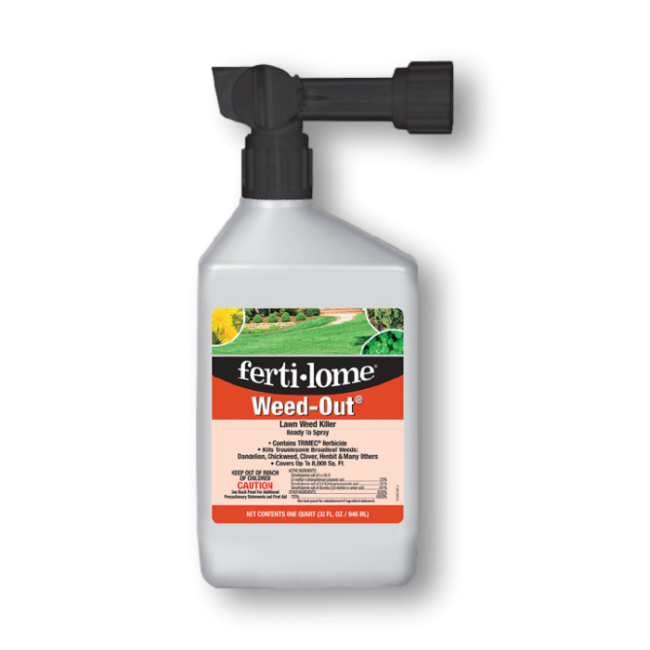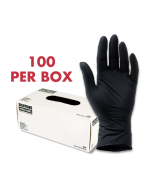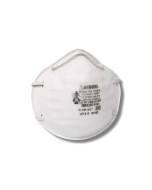Gain access to personalized product screening, the best pricing, rewards, and more!
Fertilome Weed-Out Lawn Weed Killer RTS
Fertilome Weed-Out Lawn Weed Killer RTS is an effective ready-to-spray, systemic broadleaf herbicide that quickly controls over 200 common broadleaf weeds, making it easy to spot-treat or treat entire lawns.
12/24/25
Fertilome Weed-Out Lawn Weed Killer RTS, manufactured by VPG, is a ready-to-spray powerhouse herbicide that delivers quick, effective, and surprisingly easy weed control in cool-seasoned and warm-seasoned lawns.
This easy-to-use herbicide concentrate contains trimec, mecoprop-p, 2,4-D, and dicamba. Together, these active ingredients deliver reliable, proven results killing broadleaf weeds down to the root without harming established turfgrass when used correctly. To make things even better, a single bottle covers up to 8,000 square feet, making it great for homeowners with small, medium, and even fairly large lawns.
Fertilome Weed-Out Lawn Weed Killer RTS is an incredibly easy, ready-to-spray herbicide that controls over 200 broadleaf weeds in residential and ornamental lawns. Whether homeowners are preparing their lawn for summer, trying to clean it up in spring, or giving it a fresh start in the fall, this product delivers consistently strong results and helps applicators reclaim lawns with minimal effort.
Tools Needed
You will need a garden hose to attach it too.
How to Use
- Step 1: Determine how much Fertilome Weed-Out Lawn Weed Killer RTS to use by measuring the square footage of the treatment area. Find the square footage by measuring the treatment area's length and width in feet, then multiplying them together (length X width = square footage). For the southern (warm season) grasses, apply the entire contents of this container (32 fluid ounces) on 8,000 square feet of turf [4 fl. oz. per 1,000 sq. ft.]. For the northern (cool season) grasses, apply the entire contents of the container (32 fluid ounces) on 6,000 square feet of turf [5.3 fl. oz. per 1,000 sq. ft.].
- Step 2: Shake well before using. Connect the sprayer to the hose. Turn on the water from the garden hose.
- Step 3: To begin spraying, point the nozzle in the direction you want to spray. Bend the small plastic tab back and turn the knob clockwise to ON position. Spray evenly to the area to be treated. Refer to the sight gauge clear view strip (graduated scale) on the side of the container to determine the amount of product sprayed.
- Step 4: To stop spraying, turn the knob counter-clockwise to OFF position. Turn off the water. Relieve water pressure by [bending the plastic tab back and] turning the knob to ON position until the water slows to a drip. Then turn the knob back to OFF position. Disconnect the sprayer from the hose.
Where to Use
Fertilome Weed-Out Lawn Weed Killer RTS can be used in residential and ornamental lawns. Established turf of northern (cool season) and southern (warm season) grasses may be treated.
The northern (cool-season) turfgrasses include Kentucky bluegrass, perennial ryegrass, and the fescues.
The southern (warm season) turfgrasses include St. Augustinegrass, centipedegrass, bentgrass, bahiagrass, and bermudagrass.
When to Use
For best results, spraying should be done when broadleaf weeds are young and actively growing. Older weeds will be harder to kill. Spray at any time during the growing season when weeds are actively growing, although the spray works faster with temperatures above 70 degrees Fahrenheit.
To avoid damage, do not apply to St. Augustinegrass or centipedegrass while emerging from winter dormancy.
Damage may also occur on these grasses if temperatures drop below 45 degrees Fahrenheit within 72 hours of application.
Avoid spraying St. Augustinegrass when temperatures are above 90 degrees Fahrenheit and under conditions of high humidity
Safety Information
Fertilome Weed-Out Lawn Weed Killer RTS is safe for people and pets when applied according to the product label instructions. Always wear the proper personal protective equipment (PPE) when mixing and applying this product.
Do not allow people or pets to enter the treated area until the sprays have dried.
Special Considerations
This product may be injurious to St. Augustinegrass, bentgrass and centipedegrass under conditions of high temperature and moisture.
Do not apply this product to ‘Floratam’ St. Augustinegrass.
| Restricted Use | No |
|---|---|
| Shipping Restrictions | AK, HI |
| Availability | Online |
| Signal Word | CAUTION |
| Keith's Pro Tip | "Bare spots in lawns invite weed invasion, so fill them with compatible grass seed." |
| Time to Kill | Fertilome Weed-Out Lawn Weed Killer RTS will control weeds within 30 days. |
| Chemical Type | Herbicide |
| Formulation | Ready-To-Use |
| Application Methods | Broadcast Spray, Spot Treatment |
| Product Drawbacks | Applications during certain temperatures will injure turf. |
| Active Ingredient | Trimec Mecoprop-p 3.33% 2,4-D 1.91% Dicamba 0.81% |
| Application Equipment | Gloves |
| Mix Rate | For the southern (warm season) grasses, apply the entire contents of this container (32 fluid ounces) on 8,000 square feet of turf [4 fl. oz. per 1,000 sq. ft.]. For the northern (cool season) grasses, apply the entire contents of the container (32 fluid ounces) on 6,000 square feet of turf [5.3 fl. oz. per 1,000 sq. ft.]. |
| Use Sites | Outdoors |
| Yield | 32 fl. oz. of Fertilome Weed-Out Lawn Weed Killer RTS will cover 8,000 sq. ft. |
| EPA Registration No. | 2217-695-7401 |
| Shelf Life | Fertilome Weed-Out Lawn Weed Killer RTS will last for 3 years when stored in a dry, clean area. |
| Comparable Products | Ferti-Lome Weed Out |
| Children or pets? | No |
| Property Characteristics | None |
| Availability | Online |
| Restricted Use | No |
| Brand | VPG |
| Keith's Pro Tips | "Bare spots in lawns invite weed invasion, so fill them with compatible grass seed." |
| Product Drawbacks | Applications during certain temperatures will injure turf. |
| Target Pests | Annual yellow sweetclover, Aster, Austrian fieldcress, Bedstraw, Beggarticks, Florida betony, Field Bindweed, Bird vetch, Bitter wintercress, Hairy Bittercress, Bitterweed, Black-eyed Susan, Black medic, Black mustard, Blackseed plantain, Blessed thistle, Bloodflower milkweed, Blue lettuce, Blue vervain, Bracted plantain, Brass buttons, Bristly oxtongue, Broadleaf dock, Broadleaf plantain, Broomweed, Buckhorn, Buckhorn plantain, Bulbous buttercup, Bull thistle, Bullnettle, Burclover, Burdock, Burning nettle, Burweed, Buttercup, Buttonweed, Canada thistle, Carolina geranium, Carpetweed, Catchweed bedstraw, Catnip, Catsear, Chickweed, Chicory, Cinquefoil, Clover, Cockle Cocklebur, Common mullein, Creeping jenny, Cudweed, Curly dock, English daisy, Daisy fleabane, Oxeye Daisy, Dandelion, Dichondra, Dogbane, Dogfennel, Dollarweed, False dandelion, False flax, False sunflower, Fiddleneck, Florida pusley, Frenchweed, Galinsoga, Goathead, Goldenrod, Ground ivy, Gumweed, Hairy fleabane, Hawkweed, Healall, Heartleaf drymary, Heathaster, Hedge bindweed, Hedge mustard, Hemp, Henbit, Hoary cress, Hoary plantain, Hoary vervain, Horsenettle, Jimsonweed, Knawel, Knotweed, Kochia, Lambsquarters, Lespedeza, Mallow, Matchweed, Mexicanweed, Milk vetch, Morningglory, Mouseear hawkweed, Mugwort, Musk thistle, Mustard, Narrowleaf plantain, Narrowleaf vetch, Nettle, Orange hawkweed, Oriental cocklebur, Oxalis, Parsley-piert, Parsnip, Pearlwort, Pennycress, Pennywort, Peppergrass, Pepperweed, Pigweed, Pineywoods bedstraw, Plains coreopsis (tickseed), Plantain, Poison ivy, Poison oak, Pokeweed, Poorjoe, Prairie sunflower, Prickly lettuce, Prickly sida, Prostrate knotweed, Prostrate pigweed, Prostrate spurge, Prostrate vervain, Puncturevine, Common Purslane, Ragweed, Red sorrel, Redroot pigweed, Redstem filaree, Rough cinquefoil, Rough fleabane, Russian pigweed, Russian thistle, Scarlet pimpernel, Scotch thistle, Sheep sorrel, Shepherdspurse, Slender plantain, Smallflower galinsoga, Smooth dock, Smooth pigweed, Sorrel, Sowthistle, Spanishneedles, Speedwell, Spiny amaranth, Spiny cocklebur, Spiny sowthistle, Spotted catsear, Spotted spurge, Spurweed, Stinging nettle, India mock Strawberry, Tall nettle, Tall vervain, Tansy ragwort, Tansy mustard, Tanweed, Thistle, Trailing crownvetch, Tumble mustard, Tumble pigweed, Velvetleaf, Venice mallow, Virginia buttonweed, Virginia creeper, Virginia pepperweed, Wavyleaf bullthistle, Western clematis, Western salsify, White mustard, Wild aster, Wild buckwheat, Wild carrot, Wild four-o’clock, Wild garlic, Wild geranium, Wild lettuce, Wild marigold, Wild mustard, Wild onion, Wild parsnip, Wild radish, Wild rape, Wild strawberry, Wild sweet potato, Wild vetch, Woodsorrel, Woolly croton, Woolly morningglory, Woolly plantain, Wormseed, Yarrow, Yellow rocket, and Yellowflower pepperweed. |
| Application Equipment | Gloves |
| Application Methods | Broadcast Spray, Spot Treatment |
| Active Ingredient | Trimec Mecoprop-p 3.33% 2,4-D 1.91% Dicamba 0.81% |
| Product Type | Herbicide |
| Formulation | Ready-To-Use |
| Application Rate | For the southern (warm season) grasses, apply the entire contents of this container (32 fluid ounces) on 8,000 square feet of turf [4 fl. oz. per 1,000 sq. ft.]. For the northern (cool season) grasses, apply the entire contents of the container (32 fluid ounces) on 6,000 square feet of turf [5.3 fl. oz. per 1,000 sq. ft.]. |
| Shelf Life | Fertilome Weed-Out Lawn Weed Killer RTS will last for 3 years when stored in a dry, clean area. |
| Yield | 32 fl. oz. of Fertilome Weed-Out Lawn Weed Killer RTS will cover 8,000 sq. ft. |
| Use Sites | Outdoors |
| Time to Kill | Fertilome Weed-Out Lawn Weed Killer RTS will control weeds within 30 days. |
| Comparable Products | Ferti-Lome Weed Out |
| Use Caution With | St Augustine |
| EPA Registration # | 2217-695-7401 |
*Price does not include freight. We guarantee our rate plus shipping will be less than anyone else's price.














